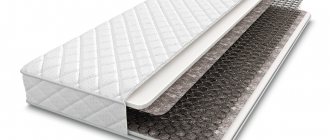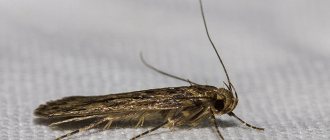- A brief excursion into biology
- Stages of development
- Features of green flies
- Harm and benefits of green flies
- Fighting blowflies Ways flies get into human housing
- Preventative measures against green flies
- Ways to combat carrions
Green flies are associated with carrion, which is justified. These insects with shiny bodies fly away as soon as a food object appears nearby. Larvae hatching from eggs speed up decomposition. They love street markets for meat, fish, sweets or other food products.
Large green flies are found on damaged fruits and berries in orchards and vineyards. There are especially many of them where there is excrement or meat (cesspools, slaughterhouses).
A brief excursion into biology
Carrion flies are insects with a green body (with a metallic or golden tint). The size of carrions is up to 1 cm. The antennae are strewn with bristles. They are found everywhere, both on the street and in houses. Green flies carry microbes and parasite eggs.
There are more than 1,500 species comprising various carrion or blowflies. All of them have a brightly colored body, with a metallic tint, green or blue. Green blowflies belong to the genus Lucilia.
For nutrition, they use liquefied material of rotting organic matter (pus, decomposing proteins), which are liquefied under the influence of enzymes secreted by the maggots themselves.
Habitat
Emerald lucilia is common in many countries of the world with warm summer climates. Its peak activity occurs during the hottest time of the year. It is in the heat that decay processes most strongly emit an odor, which is a bait for insects. In addition to carrion, green-bellied flies are also attracted to other sources of unpleasant stench:
- feces;
- rotting fruits and berries;
- plants with a rotting smell;
- food waste landfills;
- fresh and salted fish;
- meat.
Stages of development
The green fly goes through the following stages in its development:
- Egg – 8-25 hours.
- Larva (maggot) – 10±3 days.
- Pupa 3-4 days.
- Adult – 45 days.
Carrion birds quickly find open wounds, dead birds, animals and lay eggs there on the very first day. But they can also be deposited in the damp soil of flowerpots, on rotten fruits and vegetables. The eggs look like white sticks 1 mm long. Development time depends on temperature and humidity.
After a day, small larvae (a little more than 1 mm) appear from them. They develop on a favorable basis - kitchen waste, feces, animal corpses. They have 1 mouth opening plus 2 respiratory openings. There is a black hook in the mouth with which they move.
The larvae constantly secrete juice through this hook, as if from a syringe, under pressure. Under the influence of fermented juice, the tissues quickly dissolve, forming a corpse broth on which the insect feeds. The larvae grow quickly, become thicker, larger, moving to pupation after 7-14 days, choosing warm, dry places.
The pupal stage (puparia) lasts 3 days. After hatching, the adults are ready to reproduce. Each female is capable of laying 100-150 pieces per day, repeating the process every 2 days. During its short life, 1 individual is capable of reproducing up to 700 eggs (6-8 clutches).
Some types of carrion flies can lay up to 2000 pieces in 1.5 months. During one warm period, several generations appear. In warm, indoor areas, insects can breed year-round. They overwinter in any phase except eggs.
How do larvae eat?
The larva cannot yet bite off pieces of solid food. How does she eat? During the research, an experiment was carried out: pieces of slightly dried meat were placed in two flasks, and green fly larvae were planted on one of them. After a few days, the piece of meat on which the larvae lived became so soft that it resembled more of a liquid pulp. At the same time, the piece of meat in the second flask did not change at all. That is, the larvae, secreting a special secretion from their mouths, liquefy solid food, turning it into a kind of broth, and then feed on this broth.
It turns out that they digest food before eating it. In addition, the hook-shaped projections on the head of the larva are also involved in the process of such digestion. As the larva digs its hooks into the flesh, it secretes digestive juices. It is absorbed into the meat in the places where the hooks were attached.
Having reached a certain age, the larva burrows into the ground, where it pupates. After a while, the cocoon lid bursts, and a young green fly appears from under the ground. After drying the wings a little in the sun, she rushes off in search of rotting flesh.
Features of green flies
Insects become active after the temperature rises above +15°C. They carry out activities only during daylight hours or in a lighted room.
Carrion bugs easily move on any surface (horizontal, vertical), which makes them pervasive.
Green flies smell waste, especially meat and fish, from a great distance. It is enough to hang the cleaned fish carcass out to dry, and in half an hour there will be white masonry on it.
In search of suitable material for eggs, the female can fly up to 20 km.
Flies are unable to fly out of the room on their own due to their inability to see transparent barriers. Therefore, scavengers often unsuccessfully fight against windows.
Reproduction
The green fly lays about 150 eggs at a time, but in a day their number can reach five hundred. To protect the offspring from bright sunlight, to which they are very sensitive, the female looks for deep folds or holes in the flesh of the carrion, and, if possible, climbs under the corpse to lay eggs.
The insect is not at all concerned about other scavengers, such as ants, which carry freshly laid fly eggs. Her offspring are so numerous that such petty theft will not affect the general population.
Harm and benefits of green flies
The main danger of blowflies is that they spread many diseases on their bodies, including cholera, dysentery, intestinal myiasis and typhoid fever. And given their fantastic reproduction speed, flight speed and penetration into all cracks, such a danger is very likely.
Flies also spoil a huge amount of food products, causing huge losses to food industry enterprises and livestock farming (they lay eggs in the nose, eyes, genitals, wounds, and transfer various pathogens and parasites from sick animals to healthy ones).
There are also benefits from carrion. By knowing the timing of blowfly development at all stages, forensic scientists can determine the time of death to the day, even if the body has been adversely affected. Insects were first used in search of killers back in the 13th century.
During the war, 100 years ago, maggots were used for field cleaning of wounds from dead flesh. Having learned that the juice of the larvae dissolves only areas that die and does not touch the living ones, they began to use them to remove necrotic layers.
First, they filled the wounds with maggots, and after a certain time they removed the cleaners, carefully cleaned the surface of the wound and obtained clean, living and sterile flesh. For medical purposes, special larvae were used, the cleanliness and sterility of which were monitored so as not to further infect the wounded.
Even now, options for using carcasses to treat tissue necrosis are periodically being developed, since dead tissue cannot be removed surgically so thinly, nanometers in size.
Reasons for appearance
Fleur girls rarely fly into apartments, but it still happens. While most house flies are attracted to a person’s home by leftover food, the common lacewing flies into an apartment in which aphids live on indoor plants. This is the main factor that provokes the appearance of an insect.
In August or September, the midge moves into a person’s home, sensing the approaching autumn cold. You can also bring it home along with wildflowers and items that have been outside for a long time.
Fighting blowflies
To prevent the appearance of this pest in the house, you should know its habits, methods of entry, and carry out preventive measures along with control measures.
Ways of flies getting into human habitation
Green flies penetrate houses and apartments:
- through all sorts of cracks - green carrion birds fly very quickly, penetrate into the tiniest cracks;
- with vegetables, fruits, or wildflowers on which eggs are laid - when a suitable object for feeding appears, blowflies multiply at a fantastic rate.
These insects actively develop only when the weather is warm, but if the apartment is warm, then they feel great in winter. Even a single individual is dangerous, since it can lay eggs, and after that the attack on the house will begin in geometric progression.
Preventative measures against green flies
Eliminate or seal all kinds of nurseries: trash bins, manure pits, compost heaps or toilets.
Immediately destroy the carcasses of dead animals and birds.
Do not leave fresh meat or fish in a warm, open place; store food in airtight containers.
Treat insect locations.
Maintain cleanliness, quickly remove dirt, carry out wet cleaning, wipe off excess moisture, regularly ventilate the room, especially in the cool time of the day/year.
Cover windows and doors with mosquito nets.
Ways to combat carrions
Used against green flies:
- adhesive tapes - effective, safe for humans or animals, but do not guarantee complete destruction, last a long time, have a small radius of influence;
- insect repellent aerosols - effective, instant but short-term effect, cannot be used near food or where there are animals or people;
- powdered insecticides - act slowly, have a long-lasting effect, cannot be used where there are people, animals, or food;
- poisons for treating manure and garbage heaps - treatment weekly.
For larvae and pupae, larvicides are used:
- neoprene, baygon,
- creolin, naphthalizol,
- trolene, cyodrine,
- karbafos, metathion, others.
For adult insects - with external insecticides:
- dilox,
- permethrin,
- qigong and others.
Mechanical and electrical traps, as well as energized nets and gratings, are effective.
It is important to use an integrated approach, combining prevention and treatment not only indoors, but also the surrounding area (cleaning plus garbage removal, sealing cracks, and other activities).
How to get rid of flies in a shed or toilet?
Flies in an outdoor toilet or shed are a fairly common and long-known problem. There are many ways to solve it. Chemical repellents for flies in the toilet have a long-lasting effect, but when using them, you must strictly observe safety precautions and strictly follow the instructions. Folk remedies are sometimes no less effective, but safer.
Tamir
The drug is produced in the form of a solution. This product must be diluted in water, and then the resulting mixture should be distributed over the cesspool.
Doctor Robic
This product should be poured into a cesspool (the required volume is indicated on the packaging). Immediately after use, the substances contained in Doctor Robik begin to have a detrimental effect on flies and their larvae.
Bleaching
This toxic substance kills not only adults, but also larvae. To treat a toilet, bleach is poured into the cesspool and waited for it to take effect. A significant drawback of the product is its unpleasant odor. Therefore, it is better to avoid visiting the toilet during treatment, which usually takes several hours.
Ammonia
Ammonia shows high efficiency when treating the internal surfaces of a toilet or shed. Flies cannot tolerate the pungent odor, so they quickly leave the disinfected area.
Folk remedies for control and prevention
Plantings of various repellent plants allow you to create an invisible fence around the site. Such biological “weapons” include elderberry, bird cherry, walnut and wormwood.
It is better to plant geraniums inside the house. And an inconspicuous, harmless spider deftly clears the house of annoying winged guests.
Using essential oils of mint, lavender, pine or basil can repel most types of flies.
With minimal knowledge and understanding of what the green fly prefers, how it develops, and where its weak points are, you can get rid of the meat carrion once and for all.











